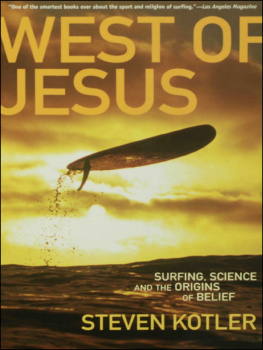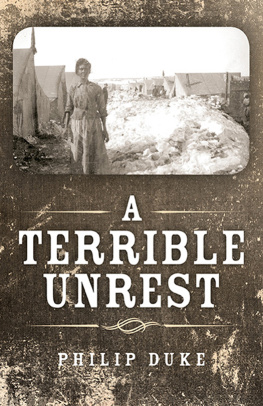Aileen Burford-Mason Ph.D. is an immunologist, cell biologist, former cancer researcher, and author of many research papers published in prestigious national and international scientific journals. For the past 15 years she has had a busy private nutritional practice in downtown Toronto. Known for her ability to take the complex field of nutritional research and make it accessible and practical for everyone, she currently teaches a popular course for doctors at the University of Toronto in the use of diet and supplements for disease prevention. For more information visit www.aileenburfordmason.ca .
Judy Stoffman has been a writer and editor on numerous publications, including the Toronto Star, Globe and Mail, and Canadian Living magazine, and has worked for the CBC News, Ideas, and As It Happens on CBC radio. Her essay about aging, The Way of All Flesh, is included in two high school English textbooks used in Ontario.

Books of Merit
EAT
WELL
AGE
BETTER
EAT
WELL
AGE
BETTER
How to Use Diet and Supplements to
Guard the Lifelong Health of Your Eyes,
Your Heart, Your Brain, and Your Bones
Aileen Burford-Mason, Ph.D.
with Judy Stoffman

Copyright 2012 Aileen Burford-Mason
All rights reserved. No part of this work may be reproduced or transmitted in any form or by any meansgraphic, electronic, or mechanical, including photocopying, recording, taping, or information storage and retrieval systemswithout the prior written permission of the publisher, or in the case of photocopying or other reprographic copying, a licence from the Canadian Copyright Licensing Agency.
Library and Archives Canada Cataloguing in Publication
Burford-Mason, Aileen, 1943
Eat well, age better : how to use diet and supplements to guard the lifelong health of your eyes, your heart, your brain, and your bones / Aileen Burford-Mason ; with Judy Stoffman.
Includes bibliographical references and index.
ISBN 978-0-88762-937-2
1. Nutrition. 2. Aging--Nutritional aspects.
I. Stoffman, Judy II. Title.
RA784.B855 2012 613.2 C2011-907284-X
The information in this book is made available with the understanding that the author and publisher are not providing medical advice or nutritional counseling services to the reader. The information is not intended to replace medical treatment and should be used in consultation with a competent health care or nutrition professional.
Editor: Janice Zawerbny
Cover design: Karen Satok
Published by Thomas Allen Publishers,
a division of Thomas Allen & Son Limited,
390 Steelcase Road East,
Markham, Ontario L3R 1G2 Canada
www.thomasallen.ca

The publisher gratefully acknowledges the support of
The Ontario Arts Council for its publishing program.
We acknowledge the support of the Canada Council for the Arts, which
last year invested $20.1 million in writing and publishing throughout Canada.
We acknowledge the Government of Ontario through the
Ontario Media Development Corporations Ontario Book Initiative.
We acknowledge the financial support of the Government of Canada
through the Canada Book Fund for our publishing activities.
12 13 14 15 16 8 7 6 5 4
Text printed on a 100% PCW recycled stock
Printed and bound in Canada
To the memory of Roger Burford-Mason (19431998)
I know of nothing so potent in maintaining good health in laboratory animals as perfectly constituted food; I know nothing so potent in producing ill-health as improperly constituted food. This, too, is the experience of stock breeders. Is man an exception to a rule so universally applicable to the higher animals?
Sir Robert McCarrison, MD (18781960), pioneer in
nutrition research
Contents

Chapter 1
Adding Life to Your Years
Chapter 2
A Short History of Eating
Chapter 3
Hidden Hunger:
The Discovery of Micronutrients
Chapter 4
Fatigue
Chapter 5
Hair, Skin and Nails
Chapter 6
Vision and Hearing
Chapter 7
Osteopenia and Osteoporosis
Chapter 8
Sleep Problems
Chapter 9
Constipation
Chapter 10
Depression, Sadness, and Anxiety
Chapter 11
Colds and Flu
Chapter 12
Weight Gain and Obesity
Chapter 13
Cholesterol and Hypertension
Chapter 14
Memory Problems
Chapter 15
Food for Health
Chapter 16
Building a Core Supplement Regime
Foreword

This book you have in your hands is first and foremost a gifta gift of knowledge and insight created for all those who want to age well. It is a gift for those who are willing to take responsibility for their own well-being, and use their discernment, their discipline and observational powers for the maintenance of their mental and physical health.
I speak of Eat Well, Age Better as a gift because it meets my definition of a great gift so well. A great gift is unique and does not duplicate something I already own; it is not just one more item to accumulate. It is something I need and can use right away. It becomes part of my daily life, and is not taken out only on special occasions, like Grandmothers teacups. The gift can be shared and can become the basis of conversations and explorations. Do keep these criteria in mind as you begin to read, and you will see how well they are met.
A set of central concepts permeates all pages of the book. First and foremost: be aware of the role of nutrition. Food and the environment profoundly affect us. Our global technological society badly needs to recognize what we as human beings need from our food to sustain us in the here and now. Eat Well, Age Better guides the readers quest for optimal functioning of the complex and unique system entrusted to them: their very own body and mind.
Aileen Burford-Mason begins with a deep respect for the traditional time-tested knowledge of nutrition, then augments this with the findings of modern scientific research. Reflecting back on her clients needs as well as on her own experiences, she offers us non-specialists a way to cope with the almost daily outpouring of new health information.
Yet this is only one feature of the book that I treasure. Maybe the aspect of the work that I most admire stems from the authors ability to integrate her sharply focused analytical approach with her holistic perception of wellness and health. She is not narrowly prescriptive, telling us simply to take this or that vitamin, but instead looks at the whole body, mindful of its individual needs and differences.
Aileen understands the distinction made by the philosopher Immanuel Kant between a mechanism, which is a functional unit whose parts exist for one another in the performance of a particular task, and an organism. The clock is the historical archetype of a mechanism, where pre-existing parts, designed to play a specific role, are assembled together into a unit whose dynamic action serves to keep track of the passing of time. An organism, on the other hand, is a functional and structural unit, in which the parts exist for and by means of each other. Thus, a plants roots, leaves and flowers are not made separately and then assembled, but arise as a result of interactions within the living organism.
Next page










